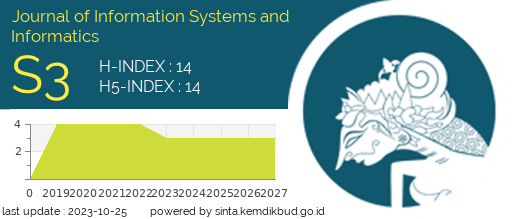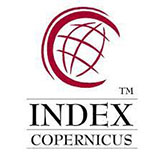Developing an Improved ITSM Framework for Ethio Telecom
Abstract
Telecom service providers are engaged exhaustively in providing various kinds of IT services for their customers. These IT services should be customer-oriented, and quality-based to be competitive in the market. To this end, organizations should manage their IT services effectively and efficiently by introducing various Information Technology Service Management (ITSM) mechanisms. However, improving or developing optimal ITSM mechanisms is a subject of great concern that needs further investigation academically.
To the best of the researcher’s knowledge, little or no research has been conducted to design and develop ITSM frameworks for the telecom sector in Ethiopia. Previous studies focused on the implementation, adoption, tailoring, and system or model development for selected ITSM processes within the Ethiopian context. Ethio telecom (ET), the sole telecom service provider of Ethiopia, has a gap in the existing ITSM practices. Hence, this research study intends to investigate the current ITSM practice of Ethio telecom and propose an ITSM framework based on ITIL best practices that ensures the quality of IT services and improve customer satisfaction.
Downloads
References
Alemeye, S. (2015). Factors Influencing the Implementation of IT Service Management Framework in Telecom Companies: A Case Study in Ethio Telecom (Addis Ababa University, Addis Ababa, Ethiopia). Retrieved from http://etd.aau.edu.et/handle/123456789/14141
Alqahtani, A. S. (2017). Critical Success Factors In Implementing ITIL in the Ministry of Education in Saudi Arabia: An Exploratory Study. International Journal of Advanced Computer Science and Applications (IJACSA), 8(4), 230–240. https://doi.org/10.14569/ijacsa.2017.080432
Alshamy, M. M., Elfakharany, E., & ElAziem, M. A. (2012). Information Technology Service Management (ITSM) Implementation Methodology Based on Information Technology Infrastructure Library Ver. 3 (ITIL V3). International Journal of Business Research and Management (IJBRM), 3(3), 113–132.
Chan, S. L. (2000). Information technology in business processes. Business Process Management Journal, 6(3), 224–237. https://doi.org/10.1108/14637150010325444
Cleven, A., Gubler, P., & Hüner, K. M. (2009). Design alternatives for the evaluation of design science research artifacts. Proceedings of the 4th International Conference on Design Science Research in Information Systems and Technology, DESRIST ’09, (19), 1–9. https://doi.org/10.1145/1555619.1555645
Daniel, T. (2015). Service Quality and Customer Satisfaction: The Case of Cellular Phone users of Ethio-Telecommunications in Ambo Town. Global Journal of Management and Business Research, 15(7), 1–8. Retrieved from https://globaljournals.org/GJMBR_Volume15/1-Service-Quality-and-Customer.pdf
Galup, S. D., Dattero, R., Quan, J. J., & Conger, S. (2009). An overview of IT service management. Communications of the ACM, 52(5), 124–127. https://doi.org/10.1145/1506409.1506439
Hevner, A. R. (2007). A Three Cycle View of Design Science Research. Scandinavian Journal of Information Systems, 19(2), 87–92. Retrieved from https://aisel.aisnet.org/sjis/vol19/iss2/4
Hevner, A. R., March, S. T., Park, J., & Ram, S. (2004). Design science in information systems research. MIS Quarterly: Management Information Systems, 28(1), 75–105. https://doi.org/10.5555/2017212.2017217
Iden, J., & Eikebrokk, T. R. (2014). Using the ITIL Process Reference Model for Realizing IT Governance: An Empirical Investigation. Information Systems Management, 31(1), 37–58. https://doi.org/10.1080/10580530.2014.854089
ITGI. (2003). Board Briefing on IT Governance - 2nd Edition [White Paper]. Retrieved from https://www.isaca.org/restricted/Documents/26904_Board_Briefing_final.pdf
Jäntti, M. (2016). Towards IT Service Management Excellence. ITSM Nordic Research Workshop 2016. Retrieved from https://pdfs.semanticscholar.org/9a74/662efab1e6a7cc94023cfb76dd2be5f2acf5.pdf
Jäntti, M., & Cater-Steel, A. (2017). Proactive Management of IT Operations to Improve IT Services. Journal of Information Systems and Technology Management, 14(2), 191–218. https://doi.org/10.4301/S1807-17752017000200004
Mangalaraj, G., Singh, A., & Taneja, A. (2014). IT governance frameworks and COBIT - A literature review. 20th Americas Conference on Information Systems, AMCIS, 1–10.
Mehravani, S., Hajiheydari, N., & Haghighinasab, M. (2011). ITIL Adoption Model based on TAM. International Conference on Social Science and Humanity IPEDR Vol. 5 (2011) ACSIT PRESS, 5, 33–37.
Melikte, P. (2016). ITIL V3 based Service Desk System with Incident Classification and Technician Assignment (Addis Ababa University, Addis Ababa, Ethiopia). Retrieved from http://etd.aau.edu.et/handle/123456789/19112
Mourad, M. B. Al, & Johari, R. (2014). Resolution of Challenges That Are Facing Organizations before ITIL Implementation. International Journal of Future Computer and Communication, 3(3), 210–215. https://doi.org/10.7763/ijfcc.2014.v3.298
Patton, M. Q. (1999). Enhancing the quality and credibility of qualitative analysis. Health Services Research, 34(5 Pt 2), 1189–1208.
Peffers, K., Tuunanen, T., Rothenberger, M. A., & Chatterjee, S. (2007). A design science research methodology for information systems research. Journal of Management Information Systems, 24(3), 45–77. https://doi.org/10.2753/MIS0742-1222240302
Prat, N., Comyn-Wattiau, I., & Akoka, J. (2014). Evaluation in Information Systems Design Science Research - A Holistic View. Proceedings - Pacific Asia Conference on Information Systems, PACIS 2014. Retrieved from https://aisel.aisnet.org/pacis2014/23
Prat, N., Comyn-Wattiau, I., & Akoka, J. (2015). A Taxonomy of Evaluation Methods for Information Systems Artifacts. Journal of Management Information Systems, 32(3), 229–267. https://doi.org/10.1080/07421222.2015.1099390
Spremić, M. (2009). IT governance mechanisms in managing IT business value. WSEAS Transactions on Information Science and Applications, 6(6), 906–915.
Tadesse, D. (2017). Developing a Tailor IT Service Management Framework based on ITIL Framework for IT Service Management Processes in Ethiopian Commercial Banks: The Case of Bunna International Bank S.C. (Addis Ababa University, Addis Ababa, Ethiopia). Retrieved from http://etd.aau.edu.et/handle/123456789/14036
Talla, M., & Valverde, R. (2013). An Implementation of ITIL Guidelines for IT Support Process in a Service Organization. International Journal of Information and Electronics Engineering, 3(3), 334–341. https://doi.org/10.7763/ijiee.2013.v3.329
Tavakol, M., & Dennick, R. (2011). Making sense of Cronbach’s alpha. International Journal of Medical Education, 2, 53–55. https://doi.org/10.5116/ijme.4dfb.8dfd
Tesfaye, M. (2013). Factors Affecting Customers Satisfaction (The Case of Mobile Customers in Addis Ababa City Administration) (St. Mary’s University, Addis Ababa, Ethiopia). Retrieved from http://repository.smuc.edu.et/handle/123456789/1937
Yeshewas, D. (2017). Quality of Service Delivery and Customer Satisfaction: A Case Study on Ethio Telecom Mobile Telephone Users in Addis Ababa City (St.Mary’s University, Addis Ababa, Ethiopia). Retrieved from http://repository.smuc.edu.et/handle/123456789/3622
 Abstract views: 4671 times
Abstract views: 4671 times Download PDF: 3248 times
Download PDF: 3248 times
- I certify that I have read, understand and agreed to the Journal of Information Systems and Informatics (Journal-ISI) submission guidelines, policies and submission declaration. Submission already using the provided template.
- I certify that all authors have approved the publication of this and there is no conflict of interest.
- I confirm that the manuscript is the authors' original work and the manuscript has not received prior publication and is not under consideration for publication elsewhere and has not been previously published.
- I confirm that all authors listed on the title page have contributed significantly to the work, have read the manuscript, attest to the validity and legitimacy of the data and its interpretation, and agree to its submission.
- I confirm that the paper now submitted is not copied or plagiarized version of some other published work.
- I declare that I shall not submit the paper for publication in any other Journal or Magazine till the decision is made by journal editors.
- If the paper is finally accepted by the journal for publication, I confirm that I will either publish the paper immediately or withdraw it according to withdrawal policies
- I Agree that the paper published by this journal, I transfer copyright or assign exclusive rights to the publisher (including commercial rights)






















_1.png)












